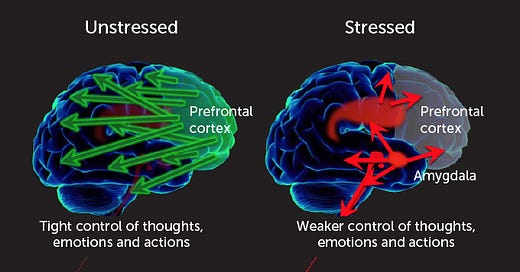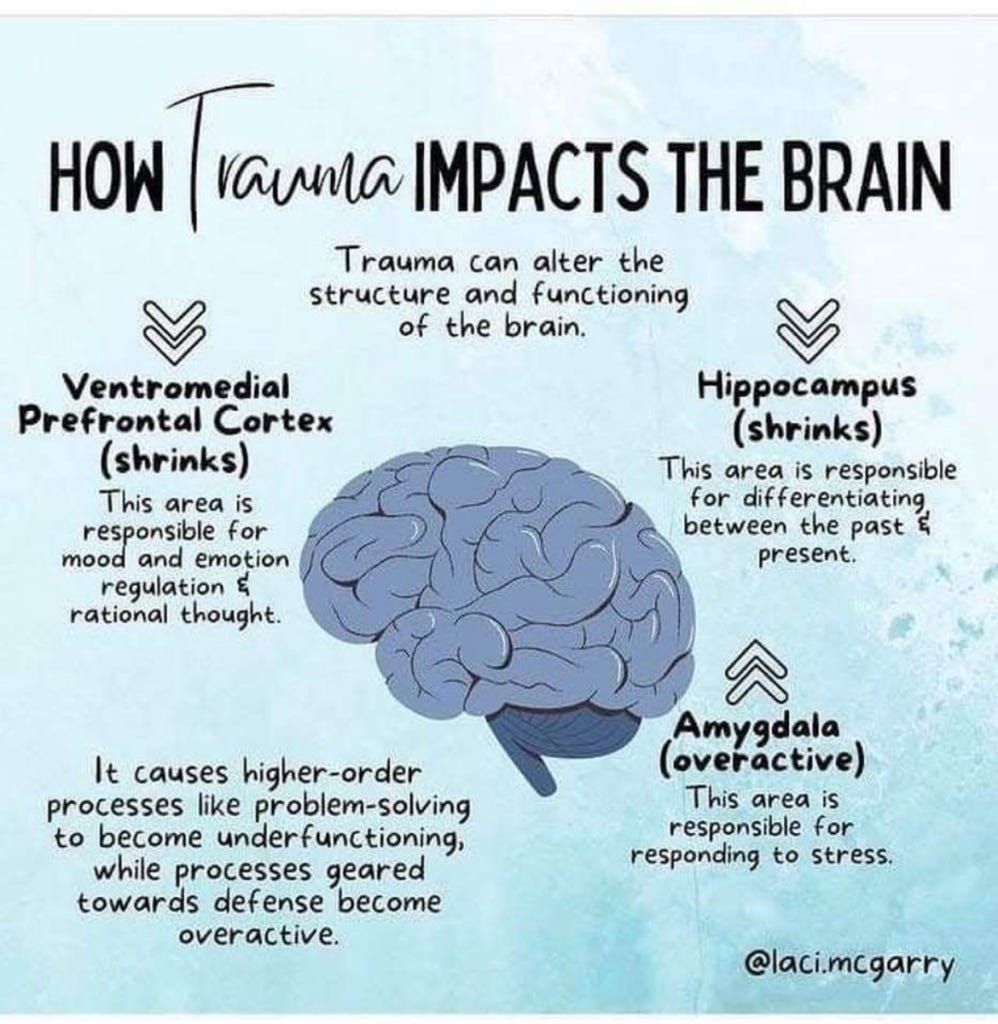Combatting Amygdala Hijack: Strategies for Emotional Control and Recovery
What is Amygdala Hijacking?
Amygdala hijacking refers to an emotional response where the amygdala, a part of the brain responsible for processing emotions like fear and anger, overrides the more rational prefrontal cortex. This results in an immediate, intense emotional reaction that may not align with the actual situation or its demands. It’s a term popularized by Daniel Goleman in his book Emotional Intelligence.
The Science Behind It
Amygdala Activation: When we perceive a threat, the amygdala activates and triggers the "fight-or-flight" response. This can lead to rapid and intense emotional reactions.
Cortex Override: The prefrontal cortex, responsible for higher-order thinking and decision-making, is temporarily bypassed during this process. This can result in impulsive actions or responses that we later regret.
Biological Basis: This mechanism is rooted in our evolutionary past, where quick reactions to potential dangers were crucial for survival.
The amygdala is the part of the brain responsible for processing emotions like fear and anger, and it can override the more rational prefrontal cortex. This results in an immediate, intense emotional reaction that may not align with the actual situation or its demands.
Interesting Facts
Evolutionary Perspective: Amygdala hijacking is an adaptive response from our ancestors who needed to react swiftly to threats. However, in modern contexts, it can lead to overreactions in situations where a calm, rational response would be more appropriate.
Stress Impact: Chronic stress can heighten the likelihood of amygdala hijacking, leading to more frequent emotional outbursts and difficulty managing stress effectively.
Amygdala Hijack in Dogmatic Communities
Fear-Based Teachings: Constant fear in these environments keeps people in a perpetual state of alertness, reducing rational thought.
Groupthink: Heightened emotions can suppress dissent and reinforce dogmatic beliefs.
Manipulation: Leaders might exploit these reactions to maintain control and keep members emotionally aroused and manipulable.
Understanding Emotional Hijacking & Complex PTSD
In the book📘Complex PTSD: From Surviving to Thriving by Pete Walker, it sheds light on what Goleman refers to as “amygdala hijacking”—an intense, overwhelming emotional regression that pulls us back to the states of fear, shame, and depression we experienced in childhood.
How Do You Know If You’re in an Amygdala Hijack? 🤔
Here are some signs that you're in the midst of one:
Intense Emotional Response: If you're feeling an overwhelming emotion like rage, panic, or intense frustration, that seems to come out of nowhere, this could be a sign of an amygdala hijack.
Tunnel Vision: When your focus narrows, and it feels like all you can see or think about is the source of your stress or anger, your brain's rational thinking process is being overridden.
Physical Reactions: Notice if your body is responding—heart racing, palms sweating, muscles tensing. These physical signs often accompany an amygdala hijack as your body prepares for 'fight or flight.'
Impulsive Behavior: Acting without thinking, like shouting, making rash decisions, or storming out of a room, can be a clear indicator that your amygdala has taken over.
Regret or Embarrassment Later: If you find yourself feeling regretful or embarrassed about your reaction after the fact, it's likely that your prefrontal cortex (responsible for reasoning) was bypassed during the moment.
Recognizing these signs in the moment can be challenging, but it’s the first step toward managing and mitigating their impact.
How this impacts you:
While in a stressed out, sympathetic state, our decision making will be impulsive, emotional and geared towards instant gratification.
In this state, the vagus nerve (our body’s master control switch) can impact everything from immune function to gut health, all the way to how we behave in social settings.
Research: It takes time for your brain to recover from this stress response, but mindfulness and cognitive strategies can help manage it.
Want 13 Tips for Managing Amygdala Hijacks?
We all experience these intense emotional responses, but the good news is there are strategies to help you regain control and respond more calmly.
In this week’s podcast episode, we break down these 13 actionable tips to help you navigate these moments with greater awareness and poise. Whether it's learning how to pause before reacting or practicing mindfulness techniques, we've got you covered.
Emotional Hijacks & Nutritional Hacks: Unveiling the 🧠 Amygdala's Secrets
Ever reacted impulsively and wondered why? Dive into the fascinating world of the "amygdala hijack" with our expert guest, J. Gulinello, MS, CNSc, FNTP. Discover how this primal brain response influences our emotions, especially in high-stress or dogmatic environments.
The amygdala hijack is a powerful brain response that can override our rational thinking, especially in high-stress or dogmatic environments. However, understanding its mechanisms and the role of nutrition in emotional regulation can help us manage our responses more effectively.






